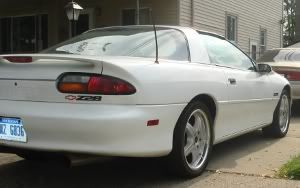OK, forget about your homebuilt engine flying apart & run the piss out of it. 
I've never had an engine NOT break in from varying the RPM & load with progressively higher RPMs, but I worry a lot more about a custom setup than a new car or bike under warranty, that's for sure. I think putting it under a load is different than running the RPMs way up. And I think the heat cycles are important, too.
So, what rpms would you guys suggest on a fresh custom engine, and when? I'll be doing this again this spring, so do you think I should break it in with the blower to help seat the rings?

I've never had an engine NOT break in from varying the RPM & load with progressively higher RPMs, but I worry a lot more about a custom setup than a new car or bike under warranty, that's for sure. I think putting it under a load is different than running the RPMs way up. And I think the heat cycles are important, too.
So, what rpms would you guys suggest on a fresh custom engine, and when? I'll be doing this again this spring, so do you think I should break it in with the blower to help seat the rings?



Comment